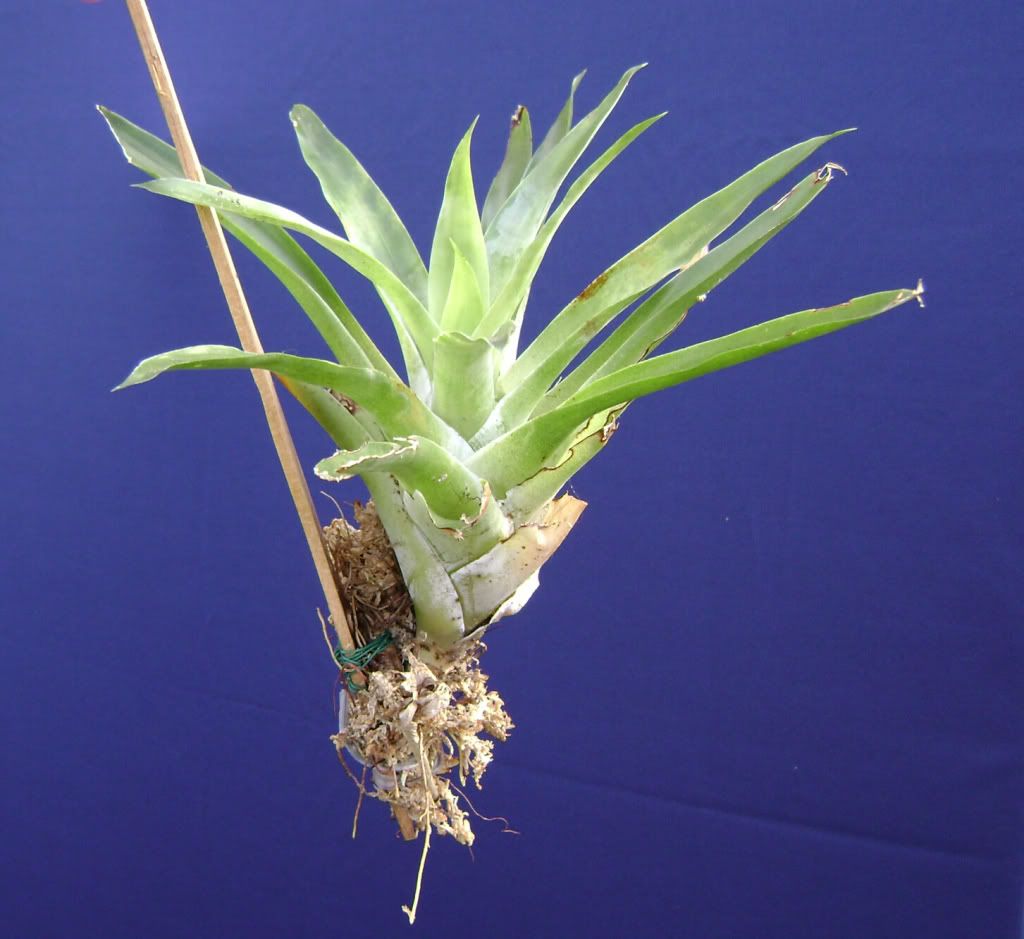Post by stevestewart on May 6, 2009 14:08:09 GMT -5
Hello all,
This thread began with my mistakenly thinking the plant involved was Catopsis floribunda.
Since Brian is out of town I thought I could post this to make him miss his forum ;D.

Thank you Juan-Carlos! ;D The "twigs" coming out of the bottom are roots! This plant is planted on only the very best "paint stirring device" with a bit of Sphagnum, just as Juan-Carlos sent it.
This is not the carnivorous form of Catopsis from Florida but I think only the lack of a published paper is keeping it from being known for utilizing the nutrients of insects it captures.
In my dichotomous keys to identify this species (Guide to the Vascular Plants of Florida, Wunderlin) and a publication produced by this state, the main differences of this species and Catopsis berteroniana, are 7dm leaves are long-attenuate from dilated bases not covered with white chalk like powder, and flower petals longer than sepals in C. floribunda. From my own observations this plant is less upright in growth form and produces more leaves than C.b.
I have not seen this plant flower yet, but because of the vigor it is showing for me it is only a matter of time. I have also noticed that over time this plant has become quite chalky, and catches as many insects as C. berteroniana.
My information does not list any hybrids between these two species, but from what I have seen in many other genera of Bromeliaceae, it could be possible. These two species are found in the same counties in Florida, and both flower during the day.
Take care,
Steven Stewart
This thread began with my mistakenly thinking the plant involved was Catopsis floribunda.
Since Brian is out of town I thought I could post this to make him miss his forum ;D.

Thank you Juan-Carlos! ;D The "twigs" coming out of the bottom are roots! This plant is planted on only the very best "paint stirring device" with a bit of Sphagnum, just as Juan-Carlos sent it.
This is not the carnivorous form of Catopsis from Florida but I think only the lack of a published paper is keeping it from being known for utilizing the nutrients of insects it captures.
In my dichotomous keys to identify this species (Guide to the Vascular Plants of Florida, Wunderlin) and a publication produced by this state, the main differences of this species and Catopsis berteroniana, are 7dm leaves are long-attenuate from dilated bases not covered with white chalk like powder, and flower petals longer than sepals in C. floribunda. From my own observations this plant is less upright in growth form and produces more leaves than C.b.
I have not seen this plant flower yet, but because of the vigor it is showing for me it is only a matter of time. I have also noticed that over time this plant has become quite chalky, and catches as many insects as C. berteroniana.
My information does not list any hybrids between these two species, but from what I have seen in many other genera of Bromeliaceae, it could be possible. These two species are found in the same counties in Florida, and both flower during the day.
Take care,
Steven Stewart




 . I do hope you are still growing the C. berteroniana I sent you.
. I do hope you are still growing the C. berteroniana I sent you.

